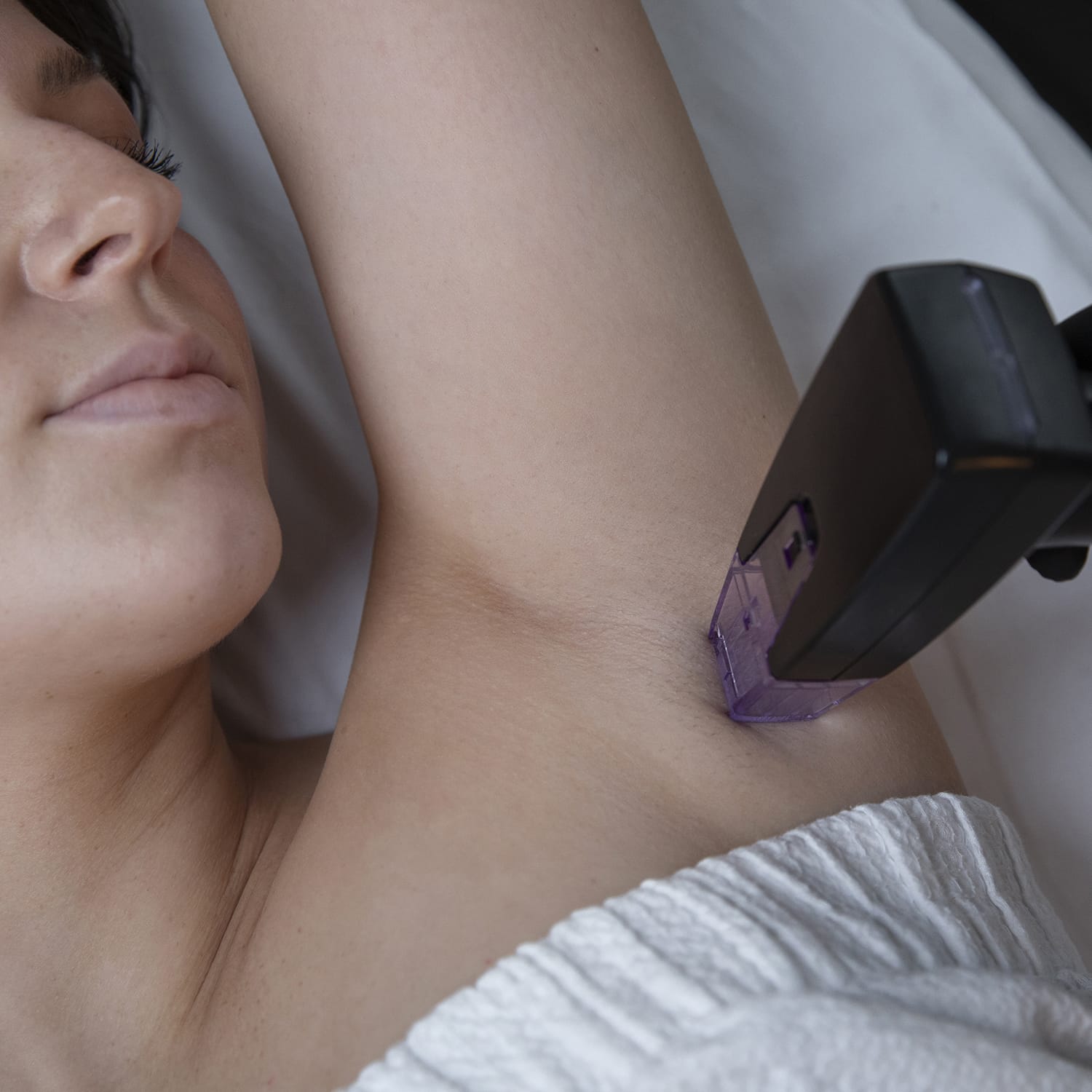Wear anything without embarrassment
You aren’t alone – nearly 365 million people struggle with excessive sweating.
“Total game-changer. No more sweat stains on my work shirts.” – Chris, CSLC patient
Permanently reduce sweat, odor, and hair in the underarm area, palms, and feet by 80%
CSLC offers Morpheus 8 and Botox to eliminate excessive sweating

What is hyperhidrosis?
Hyperhidrosis (pronounced hi-pur-hi-DROE-sis) is a fancy term for abnormal or excessive sweating that’s unrelated to exercise or heat.
According to the American Academy of Dermatology Association (AAD), symptoms of hyperhidrosis include:
- visible sweating for no apparent reason
- soft, white skin that peels in certain areas
- frequent skin infections
Hyperhidrosis can affect the following areas of the body:
- armpits
- soles of the feet
- palms of the hands
- lower back
- genitals
- face (cheeks and forehead)
Pictured: Morpheus 8 treatment for hyperhidrosis
What causes hyperhidrosis?
There are two types of hyperhidrosis:
- Primary focal hyperhidrosis is a genetic, chronic skin disorder. This condition is the result of a mutation or change in a person’s genes and usually affects the armpits, hands, feet, and/or forehead. Focal hyperhidrosis begins during a person’s childhood or adolescence.
- Secondary hyperhidrosis refers to excessive sweating that occurs due to an underlying cause (e.g. obesity, injury, frostbite), medical condition (e.g. diabetes, Parkinson’s disease, hyperthyroidism), or taking specific medications or supplements (e.g. naproxen, zinc supplements). Secondary hyperhidrosis, also called generalized hyperhidrosis, occurs in adults.
If left untreated, hyperhidrosis can disrupt a person’s daily activities and cause social anxiety and embarrassment.
Does hyperhidrosis go away?
Said their excessive sweating has either gotten worse or stayed the same over time
Said that their sweating bothers them year-round, regardless of the season.
According to the International Hyperhidrosis Society (IHS), hyperhidrosis doesn’t go away or decrease with age.
In a survey conducted by the IHS and published by Dermatologic Surgery, 88% of 2,000 survey participants total said their excessive sweating has either gotten worse or stayed the same over time.
What’s more? Sixty-five percent of patients said that their sweating bothers them year-round, regardless of the season.
Treatment options for hyperhidrosis
While there isn’t a current cure for hyperhidrosis, there are a number of ways to manage this condition. Here are some treatment options for a person with hyperhidrosis to consider:
The first, and probably most obvious, treatment option dermatologists recommend for hyperhidrosis is an antiperspirant. When used as directed, an antiperspirant can help a person with hyperhidrosis manage their symptoms.
Antiperspirants work by “plugging” a person’s sweat glands. According to the AAD, this “plug” sends a signal to the body to stop producing sweat. Antiperspirants come in regular and clinical strength.
Morpheus8 vs Botox for Underarm Sweat
Morpheus8
- energy-based
- non-surgical
- treatment can take up to one hour
- no downtime
- reduces odor and sweat (and sometimes reduces hair)
- long-lasting results
- FDA-approved to treat excessive underarm sweating
- may cause temporary swelling and/or soreness for a few days
Botox
- injected into the armpit
- Quick-15 minutes
- reduced sweating for up to six months
- Retreatment needed to maintain results

Client Testimonial
“Love this place! I got my hyperhidrosis on my under arms done. It changed my life. I highly recommend if you have issues with that and any other treatment they offer. Going back for facial health help.”
Ashlee C.
Hyperhidrosis Frequently Asked Questions
Ready to get started?
Book a free consultation today!